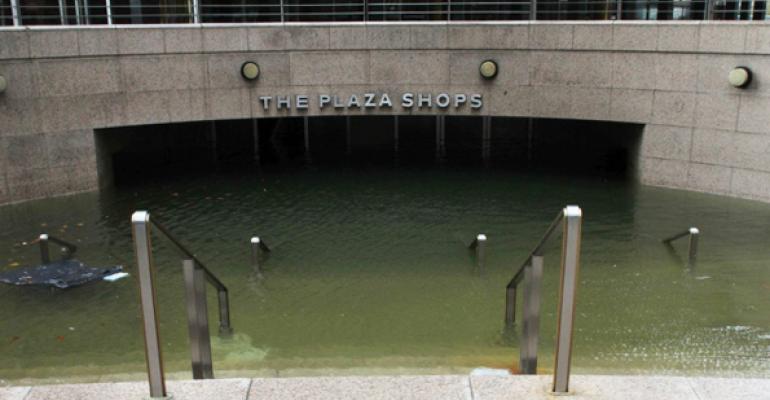If it would be possible to find a positive in the damage caused by Hurricane Sandy last week it might be that the storm reinforced once again how important it is for commercial property owners to carry adequate insurance coverage.
According to meteorologists, Sandy set records for barometric pressure and storm surge, taking the East Coast by surprise. And when it was over, some commercial and multifamily buildings in low-lying areas in New York and New Jersey had been left with damage their owners could hardly have anticipated.
In a fortunate turn of events, Lower Manhattan’s best-known construction project—the World Trade Center (WTC) office complex—suffered no structural damage and its mechanical systems remained intact, according to a statement from developer Silverstein Properties. But as of Tuesday, Silverstein’s crews were still pumping water from the basement levels of WTC buildings 2, 3 and 4. Flooding also caused some damage to Silverstein’s existing 615,000-sq.-ft. office building at 120 Wall Street, though the company promised that the property would re-open no later than next week.
Nearby, Brookfield Office Properties’ World Financial Center and One Liberty Plaza suffered some “collateral damage,” according to a company press release. Water also had to be pumped out from the sublevels at One New York Plaza, a 2.6-million-sq.-ft. office building at Water and Whitehall Streets. As of Nov. 4, the Plaza remained closed, with no set re-opening date.
Damages throughout the region
Interviews with a sampling of owners and property managers throughout the region revealed an inconsistent picture: some assets were barely touched, while others face issues as a result of the storm surge and floodwaters.
For example, third-party property management firm Jones Lang LaSalle estimates that approximately 15 percent of its assets in the New York tri-state region, or 10 million sq. ft. of its 75-million-sq.-ft. regional portfolio, have been significantly impacted.
Those assets include primarily industrial buildings in the New Jersey Meadowlands, as well as properties in Lower Manhattan, according to Stephen Schlegel, COO of Jones Lang LaSalle’s New York tri-state operations. The main problem has been damage to electrical equipment caused by saltwater flooding. Even though by now the water has been pumped out of most of the affected buildings, if their electrical systems were based on the lower floors, in many cases, they will be badly damaged, Schlegel says.
“Saltwater on the electrical equipment is a bad combination,” he notes, adding that oftentimes equipment repair might not even be possible, requiring the order and installation of new parts. Schlegel estimates that it will likely be from one to two weeks before the buildings will once again be safe for occupancy.
Flooding has also caused most of the damage at 56 Beaver Street and 125 Maiden Lane, a residential and an office building, respectively, located in the Financial District and owned by Time Equities Inc. The company is currently dealing with elevator issues at 56 Beaver Street and trying to wire new generators and a portable boiler at 125 Maiden Lane, according to Founder Francis Greenburger.
“Our recovery work is advancing quickly, but it’s a matter of safety and exactly how long it would take, I don’t know,” says Greenburger. “We’ve cleared all the water. A longer-term fix will take some extended period of time, but our goal is to get tenants back in the building as soon as possible.”
A few blocks away from Time Equities’ building, New York-based REIT SL Green Realty has been working to remove water from the basement of 180 Maiden Lane, a glass office tower facing the FDR Drive, and to restore the building’s operating systems. Luckily, the rest of SL Green’s portfolio suffered minimal damage, according to a press release the company put out on Oct. 31, the day after the hurricane.
Jones Lang LaSalle estimates that in all of Downtown Manhattan the amount of office space that’s not currently open for business amounts to 35 million sq. ft., or 34.6 percent of the area’s total office stock. Most of the affected buildings are located east of Broadway.
The fact that the greatest damage to all these structures has been caused by flooding, rather than wind, is important because even though most property insurance policies cover tropical storms, they won’t necessarily pay for storm-related flooding, as many property owners learned in the aftermath of Hurricane Katrina. All of the buildings mentioned above carry flood insurance, which means that their owners will be at least partially compensated for the damages to their assets. Commercial property owners who have yet to invest in a flood insurance policy might want to rethink that “it could never happen here” mindset.

